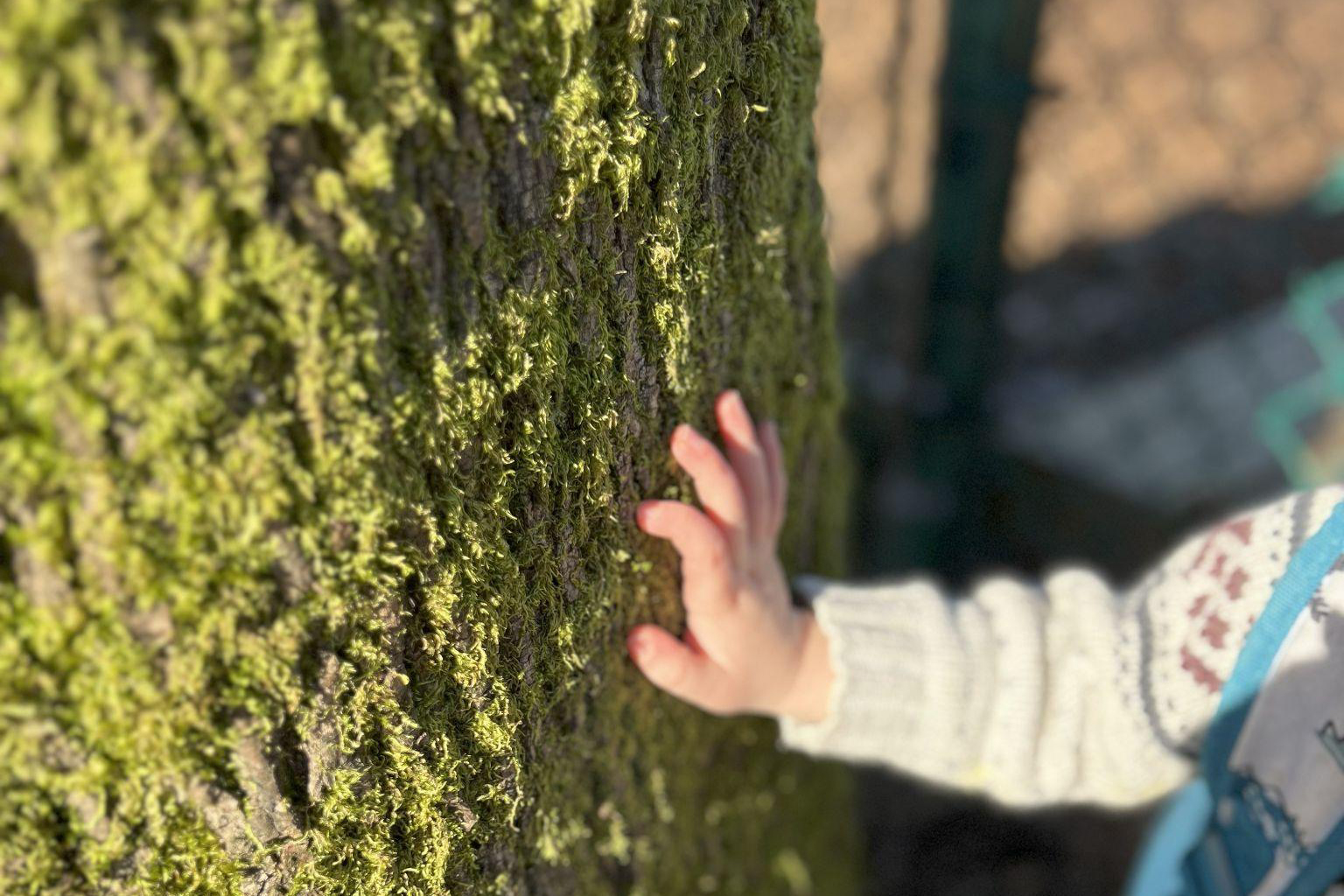
In this reflection, Chieri writes about how one of the children in our Village toddlers group made a connection in the community by sharing a gift from the land. Chloe's generosity demonstrates how the value of a gift is in sharing the gifts we are given, whether by the Land or each other.
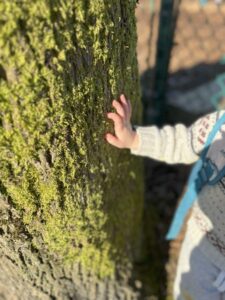 We have some trees we've named around our neighbourhood. One of them is called Bob.
We have some trees we've named around our neighbourhood. One of them is called Bob.
One day, while walking with the Willow Sprouts children, Mario found a fallen leaf under Bob. He picked it up gently and said, “Chieri, this is a gift from Bob!”
I was moved by how poetic his words were. That single leaf—something many adults might overlook—became a meaningful offering through Mario’s eyes. It reminded me that the natural world constantly offers us small, quiet gifts—signs of kindness, generosity, and life’s subtle cycles.
At our playground, we are surrounded by many such offerings: berry trees, apple trees, herbs, and flowers. And that leads me to a quiet but powerful moment I shared with Chloe.
One day, Chloe missed the opportunity to go for a walk with one of the Educators and looked visibly downhearted. Wanting to lift her spirits, I offered, “Let’s say Hi to the bus together.” I said it, because whenever we asked her, “What do you want to do today?”, Chloe often answered, “I’m going to say Hi to the bus.” This simple daily ritual meant walking to the nearest bus stop from the Village and waving as the neighbourhood bus passed by.
As we waited for the other children to get ready, Chloe came over holding three of the garden bowls that Melanie set up earlier that day—one with oregano, one with lavender, and one with tiny apples.
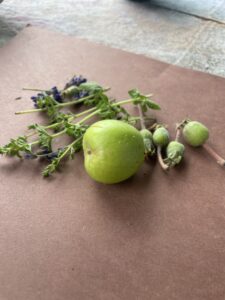 Chloe: “I want to bring it to the bus,”
Chloe: “I want to bring it to the bus,”
I paused, a little puzzled. “Why?” I asked.
Chloe: “Because I want to give it to a bus driver,”
And in that instant, my confusion melted away. Chloe had seen a connection I hadn’t. While I had viewed the bus stop as just a destination, she had made it personal. She had included the bus driver—someone who is part of our neighbourhood and our daily rhythm—into her world of care and giving.
I suggested we wrap the forages in paper instead of giving the bowls, and off she went with her friends, carrying the bundle carefully in her hands.
While we waited at the bus stop, Roselyn asked, “Why do you want to give this to the bus driver?”Chloe answered simply, “Because Chieri wrapped this.”
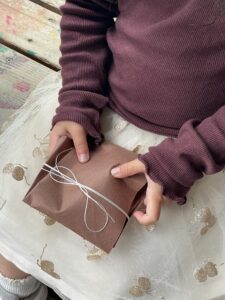 Why did she want to give these forages to the bus driver?
Why did she want to give these forages to the bus driver?
What does “bus driver” mean to her?
What does “sharing the forages with others” mean to her?
When the bus arrived, Chloe stepped forward and offered the bundle.“This is for you,” we said. The driver smiled and said, “Thank you.”
It was a brief exchange, but its meaning lingered. That seemingly small gesture made me reflect more deeply on the nature of gift-giving. What Chloe offered wasn't just a few herbs and apples—it was a moment of connection, of presence, of recognition.
What struck me was that the gifts Chloe chose came directly from the earth. Nature gave something to us, and Chloe, without being prompted, chose to pass it along to someone else in her world.
In "Braiding Sweetgrass: Indigenous Wisdom, Scientific Knowledge, and the Teachings of Plants", Robin Wall Kimmerer reflects on a similar idea. She writes about how she received strawberries from the earth and used them to bake a cake for her father:
“Because it is given to us, it should only be given to others.” (Kimmerer, 2013, p. 26)
The strawberries were a gift from the land. Her time, attention, and care were part of the gift she gave her father. She continues:
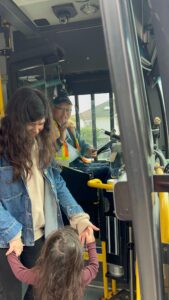 “That is the fundamental nature of a gift: they move, and their value increases with this passage. [...] The more something is shared, the greater its value becomes.” (p. 27)
“That is the fundamental nature of a gift: they move, and their value increases with this passage. [...] The more something is shared, the greater its value becomes.” (p. 27)
I wonder—did Chloe already understand this fundamental truth?
That a gift doesn’t end with the receiving. That when something is given freely, it invites us to share it further. Perhaps, by offering the herbs to the bus driver, she was intuitively honouring this natural law of reciprocity.
In the Willow Sprouts program, there have been many moments when gifts from nature found their way from the children’s hands to others—shared as gestures of care or connection.
After the Lapu Lapu Day festival tragedy, the children visited South Vancouver Neighbourhood House with hand-picked bouquets from our neighbourhood to offer their condolences and support.
On the day of Curriculum Night, they gathered wildflowers to decorate the classroom—sharing the beauty they discovered during their adventures with their families.
These acts, too, were gifts—gifts of attention, kindness, and shared meaning.
Kimmerer reminds us:
“Gifts from the earth or from each other establish a particular relationship, an obligation of sorts to give, to receive, and to reciprocate.” (p. 25)
Perhaps Chloe knew this without needing to be taught. Perhaps her offering to the bus driver wasn’t just an act of kindness—but a gesture of connection, of understanding, of reciprocity.
In that moment, Chloe reminded me what a gift truly is: Not something to possess, but something to pass on. Not just a thing, but a feeling, a relationship, a way of saying, “I see you. I care about you. I want to connect with you”
References
Kimmerer, R. W. (2013). Braiding Sweetgrass: Indigenous Wisdom, Scientific Knowledge, and the Teachings of Plants. Milkweed Editions.
